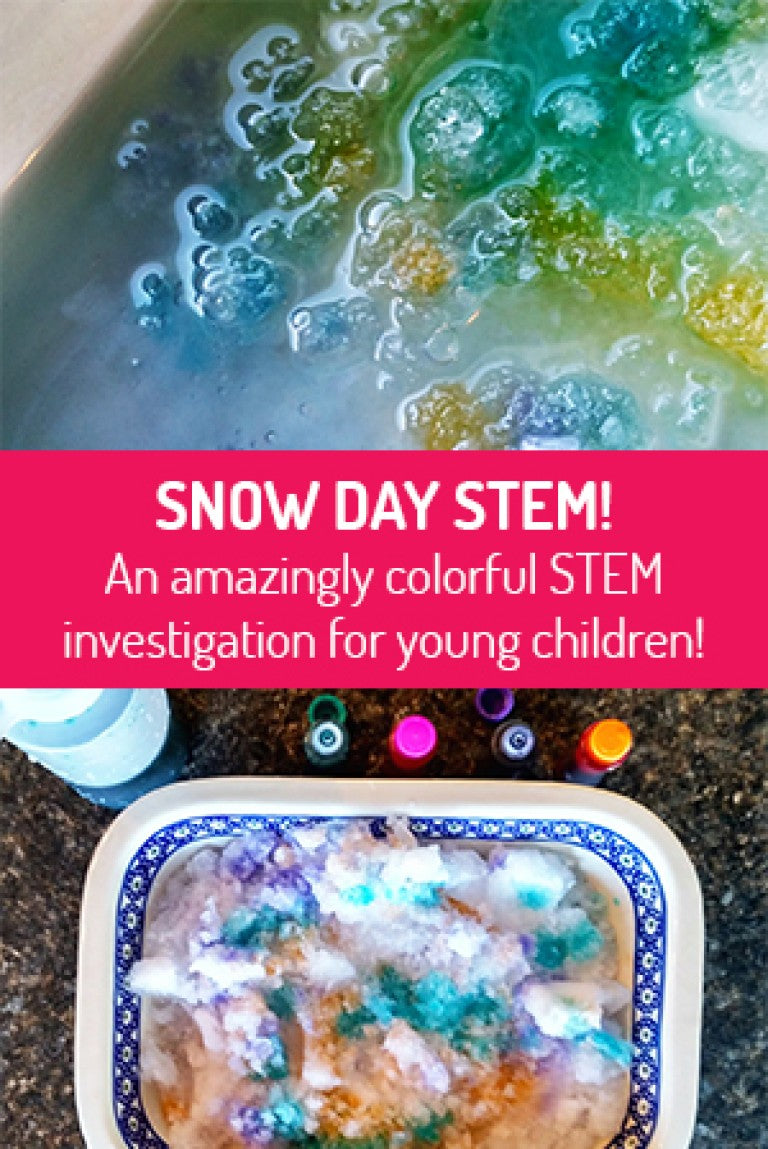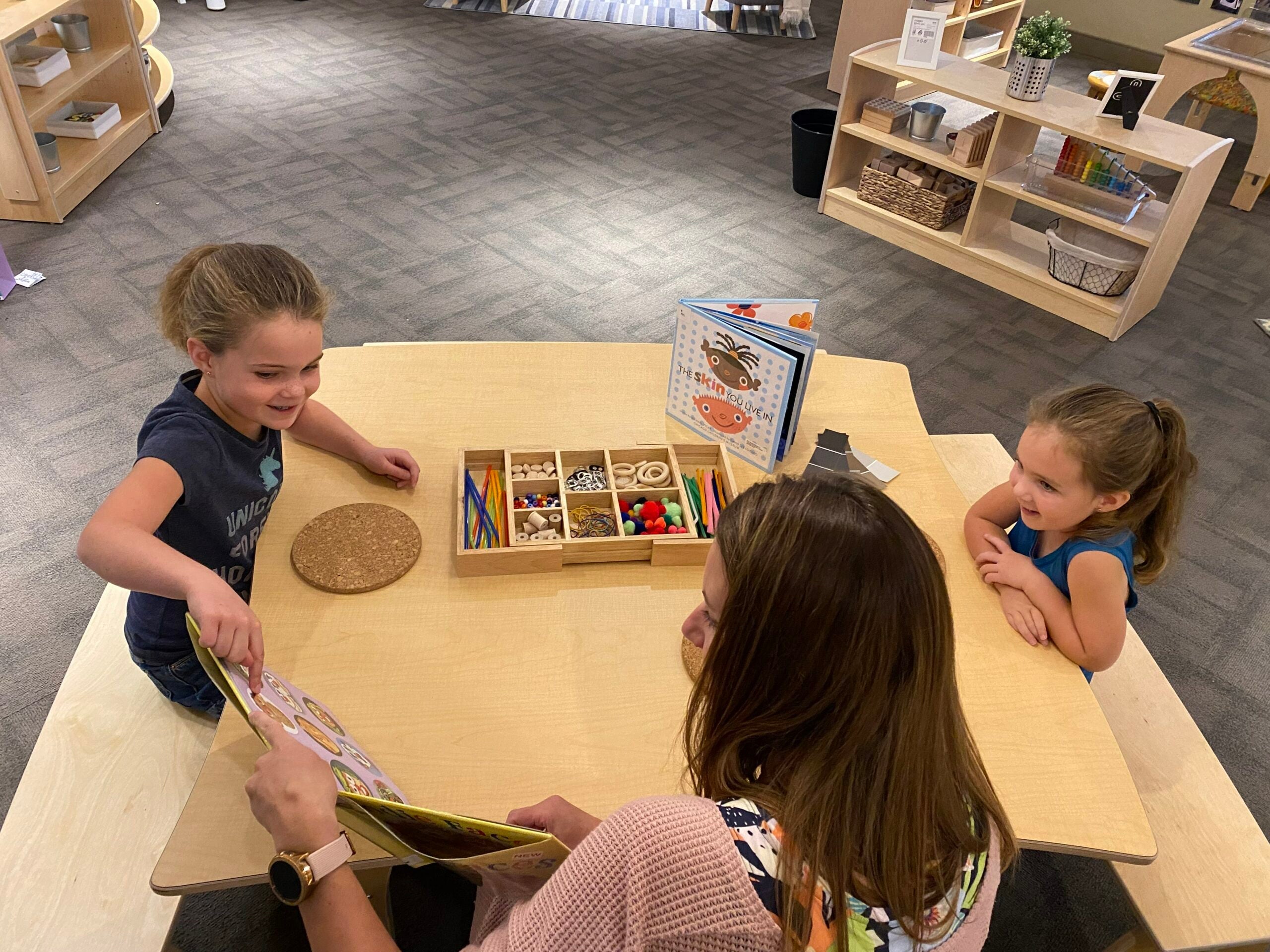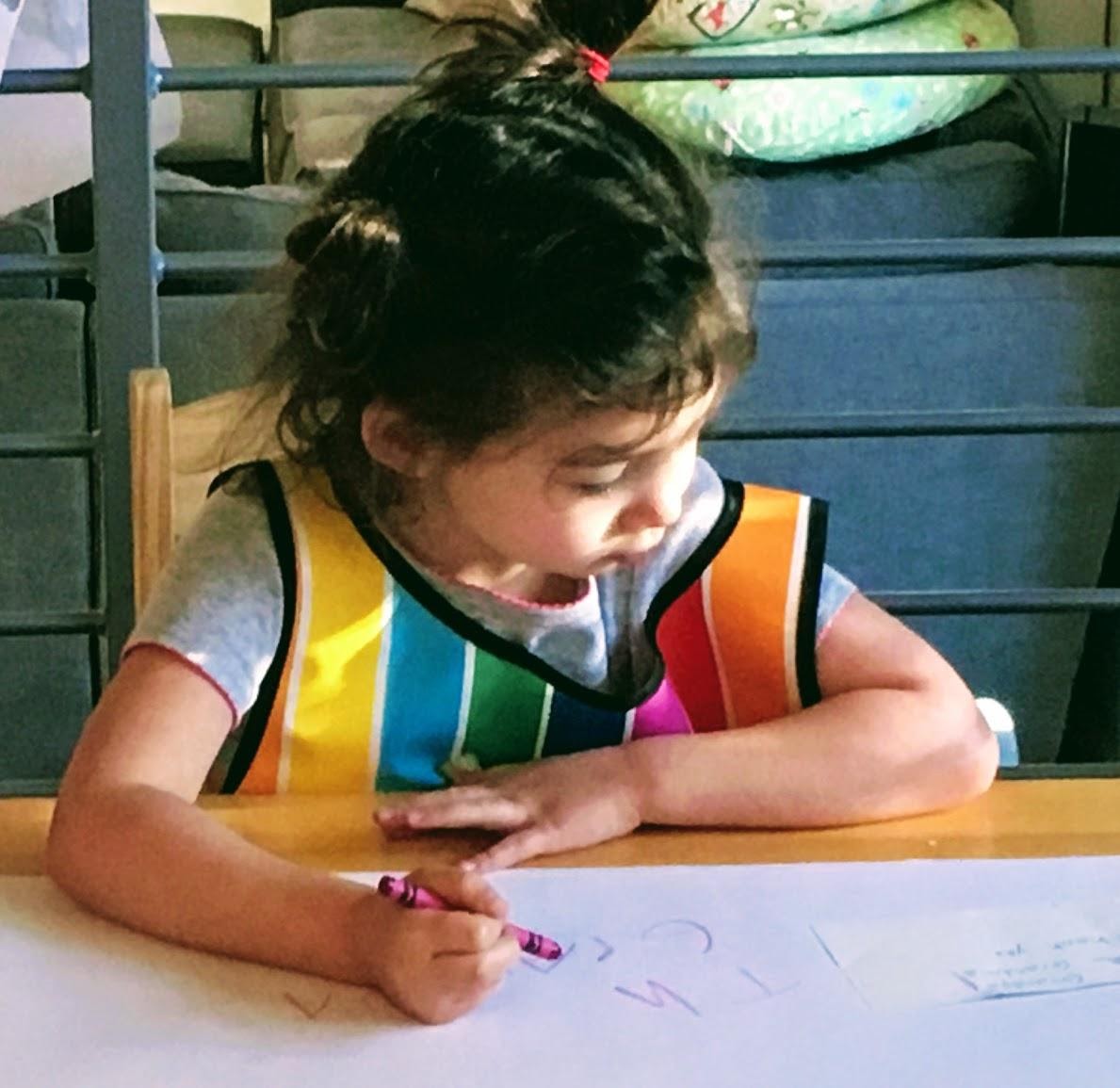If you’re living in the United States, you are likely very aware that the middle of our country very recently got blanketed by lots and lots of snow! To be precise, 14” fell here at our office in Broomfield, Colorado just the other week. While some may see the snow as a barrier, we see it as a great canvas for educational outdoor STEM activities for kids! All this snow has inspired us to head outside for our investigations, but you can feel free to modify this for an indoor environment as well!
Tools to aid your investigation:
To begin, first decide if you will be outside or inside. If you are outside, we recommend using squirt bottles and/or spray bottles as your “paint brushes”. If you are indoors, select bowls with different size and shaped paint brushes that are ideal for the size of your workspace. To begin, have your children fill the bottles or bowls with water. Next, add and mix food dye colors to the water. We strongly encourage that children lead the color mixing; invite them to choose their colors, how much to use, and which colors to mix. Be sure to provide a large variety of color options to support a color mixing investigation! If you’re going to bring snow into the classroom, we recommend using trays, like our water-tight Activity Tray, to contain the snow. Within the trays, using scoops and other common classroom items, like spoons, cups, or straws, can help create designs, piles, or a smooth surface to work on. Stones or other natural materials can be added into the snow art to create multi-media masterpieces! Children love to collect loose parts from the classroom (point out some that won’t be stained by food dye) to add into their creations. If you are able to go outside, we strongly recommend you do. Outdoor Investigations have fewer restraints - your “workspace” spans the entire area of the yard. The sun may even play a part in the creative process as melting snow will affect the children’s colorful designs. Playing outside opens up so many doors to building, sculpting, and role playing - or just creating modern art masterpieces! In either scenario, children may “paint” as they please, experimenting with how colors mix, how the snow reacts to the water, how the snow changes with manipulation, and how the color affects different densities of snow. At the end, the snow will of course melt. This is not only an opportunity for children to observe how snow behaves and how the colors move and blend as the snow melts, but also to practice mindfulness and acceptance of the change and their slowly evolving artwork.
Uncover the learning:
In either scenario, children may “paint” as they please, experimenting with how colors mix, how the snow reacts to the water, how the snow changes with manipulation, and how the color affects different densities of snow. At the end, the snow will of course melt. This is not only an opportunity for children to observe how snow behaves and how the colors move and blend as the snow melts, but also to practice mindfulness and acceptance of the change and their slowly evolving artwork.
Uncover the learning:
- Condiment squirt bottles and/or spray bottles for outdoor play
- Bowls or cups and paintbrushes for indoor play
- Water to fill bowls, cups, condiment bottles, etc.
- Food dye or liquid watercolor
- Activity Tray to contain snow and other materials (optional)
- Scoops or spoons for mixing and moving snow (optional)
To begin, first decide if you will be outside or inside. If you are outside, we recommend using squirt bottles and/or spray bottles as your “paint brushes”. If you are indoors, select bowls with different size and shaped paint brushes that are ideal for the size of your workspace. To begin, have your children fill the bottles or bowls with water. Next, add and mix food dye colors to the water. We strongly encourage that children lead the color mixing; invite them to choose their colors, how much to use, and which colors to mix. Be sure to provide a large variety of color options to support a color mixing investigation! If you’re going to bring snow into the classroom, we recommend using trays, like our water-tight Activity Tray, to contain the snow. Within the trays, using scoops and other common classroom items, like spoons, cups, or straws, can help create designs, piles, or a smooth surface to work on. Stones or other natural materials can be added into the snow art to create multi-media masterpieces! Children love to collect loose parts from the classroom (point out some that won’t be stained by food dye) to add into their creations. If you are able to go outside, we strongly recommend you do. Outdoor Investigations have fewer restraints - your “workspace” spans the entire area of the yard. The sun may even play a part in the creative process as melting snow will affect the children’s colorful designs. Playing outside opens up so many doors to building, sculpting, and role playing - or just creating modern art masterpieces!
 In either scenario, children may “paint” as they please, experimenting with how colors mix, how the snow reacts to the water, how the snow changes with manipulation, and how the color affects different densities of snow. At the end, the snow will of course melt. This is not only an opportunity for children to observe how snow behaves and how the colors move and blend as the snow melts, but also to practice mindfulness and acceptance of the change and their slowly evolving artwork.
Uncover the learning:
In either scenario, children may “paint” as they please, experimenting with how colors mix, how the snow reacts to the water, how the snow changes with manipulation, and how the color affects different densities of snow. At the end, the snow will of course melt. This is not only an opportunity for children to observe how snow behaves and how the colors move and blend as the snow melts, but also to practice mindfulness and acceptance of the change and their slowly evolving artwork.
Uncover the learning:
- Did children use any unconventional methods of measurement when mixing colors ?
- Did children identify any of the physical properties of the snow, ice, or water?
- What challenges or constraints does snow offer, when used as a building or art material?
- How did you help children note the temporariness of the art and understand why it changed?




Share:
66 Essential STEM Preschool Books to Read This Year
Identifying Early Learning in the Daily Lives of Children: Airport Observations